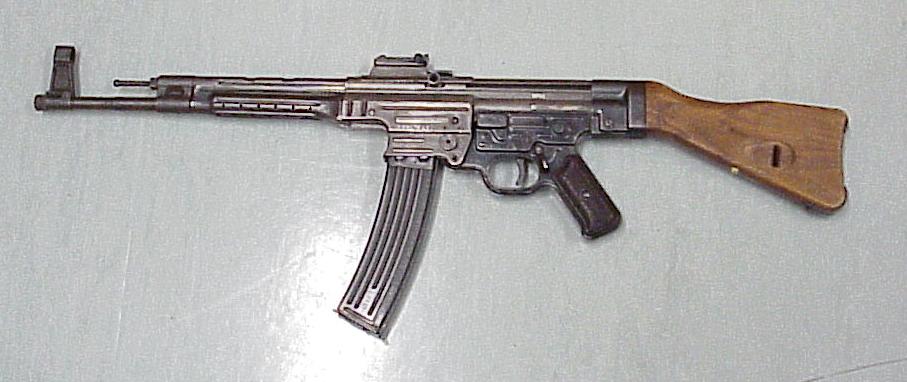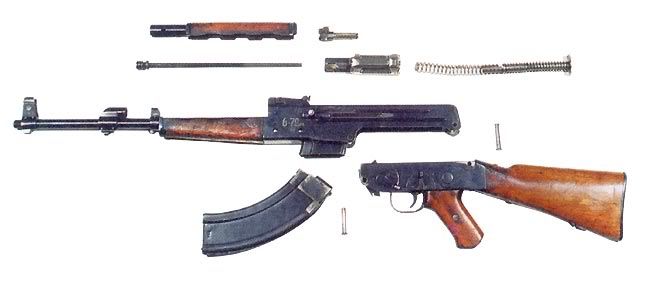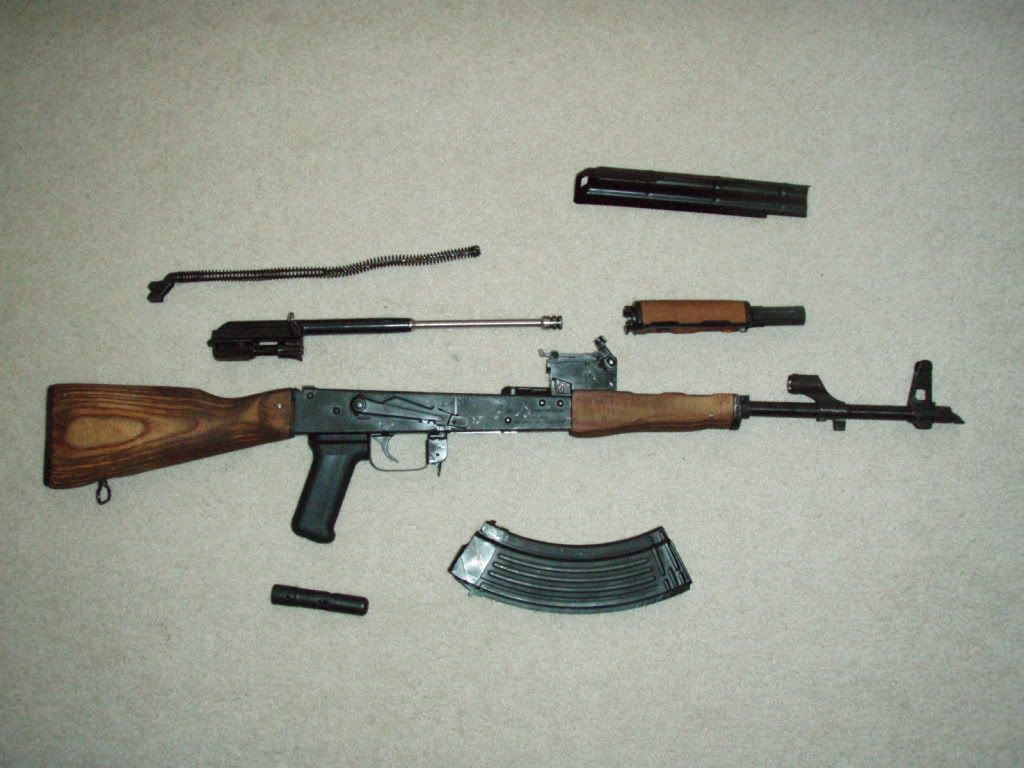Mike Irwin
Staff
I'm not exactly sure what you're copying material from Wikipedia for -- it agrees with what I've said.
Moisin-Nagant production never ceased (I lumped rifles and carbines into that statement, as the SVT-40 was supposed to replace them both).
It was largely a failure in the hands of troops. It wasn't durable, it was difficult for many to maintain properly, and it was eventually withdrawn and given to specialists and NCOs.
"You're missing the point. I'm saying Kalashnikov did not borrow from anyone when it came to the placement of the sights on the AK design because it wasn't up to him, it was a design parameter required by Soviet authorities. No other explanation makes sense in explaining why the AK and all its competitors put the sights in the same place, as well as the SKS, SVT-38/40, etc."
Once gain, I'm going to have to disagree with that, Horse.
The SVT-40, the SKS and the AK-series of rifles have one thing in common...
A rather loosely fitting action cover. To place the sights on this action cover would have diminished the accuracy capabilities of all three of these weapons .
No designer would consider a floating receiver cover (and in the case of the AK-47, one made of extremely thin sheet metal) as a proper place for a set of sights.
Repeatable accuracy would have been impossible, and these cases, form DICTATES function.
Photographs of just about every prototype I've seen that was developed as a competitor of the Soviet post-war rifle trials (Sudayev, Tokarev, Bulkin) has the same feature -- a floating receiver cover that is removed to allow access to the internal parts.
Placing the sights on the receiver cover would have been a disaster for a rifle with an already spotty reputation for accuracy.
As I've also noted above, Soviet designers, including Sudayev and Shpagin, didn't hesitate to relocate the sights on their submachine gun designs, pushing the sight farther to the rear and closer to the firer's eye.
While it's certainly possible that the Soviet specifications were restrictive enough to dictate both type and placement of the sight, I'm not sure that I buy it.
The Soviets actually had a pretty solid history of forward looking innovation when it came to firearms design.
I really don't think that Soviet process would have been so incredibly short sighted as to hamstring possible designs by mandating something as silly as the location of a sight when the overall goal was something so incredibly forward looking.
I think it's a LOT more likely that the design specifications mandated very easy and quick access to the bolt, carrier, return spring and chamber in much the same manner as the Stg-44, and the easiest way of doing that while providing a solid-frame rifle (as opposed to the Stg-44) was with a removable receiver cover.
Moisin-Nagant production never ceased (I lumped rifles and carbines into that statement, as the SVT-40 was supposed to replace them both).
It was largely a failure in the hands of troops. It wasn't durable, it was difficult for many to maintain properly, and it was eventually withdrawn and given to specialists and NCOs.
"You're missing the point. I'm saying Kalashnikov did not borrow from anyone when it came to the placement of the sights on the AK design because it wasn't up to him, it was a design parameter required by Soviet authorities. No other explanation makes sense in explaining why the AK and all its competitors put the sights in the same place, as well as the SKS, SVT-38/40, etc."
Once gain, I'm going to have to disagree with that, Horse.
The SVT-40, the SKS and the AK-series of rifles have one thing in common...
A rather loosely fitting action cover. To place the sights on this action cover would have diminished the accuracy capabilities of all three of these weapons .
No designer would consider a floating receiver cover (and in the case of the AK-47, one made of extremely thin sheet metal) as a proper place for a set of sights.
Repeatable accuracy would have been impossible, and these cases, form DICTATES function.
Photographs of just about every prototype I've seen that was developed as a competitor of the Soviet post-war rifle trials (Sudayev, Tokarev, Bulkin) has the same feature -- a floating receiver cover that is removed to allow access to the internal parts.
Placing the sights on the receiver cover would have been a disaster for a rifle with an already spotty reputation for accuracy.
As I've also noted above, Soviet designers, including Sudayev and Shpagin, didn't hesitate to relocate the sights on their submachine gun designs, pushing the sight farther to the rear and closer to the firer's eye.
While it's certainly possible that the Soviet specifications were restrictive enough to dictate both type and placement of the sight, I'm not sure that I buy it.
The Soviets actually had a pretty solid history of forward looking innovation when it came to firearms design.
I really don't think that Soviet process would have been so incredibly short sighted as to hamstring possible designs by mandating something as silly as the location of a sight when the overall goal was something so incredibly forward looking.
I think it's a LOT more likely that the design specifications mandated very easy and quick access to the bolt, carrier, return spring and chamber in much the same manner as the Stg-44, and the easiest way of doing that while providing a solid-frame rifle (as opposed to the Stg-44) was with a removable receiver cover.




